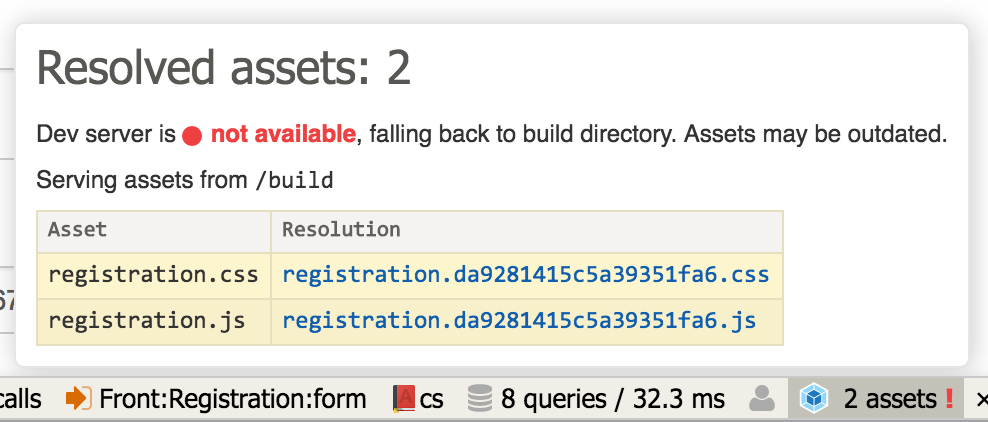webwings/WebpackNetteAdapter
WebpackNetteAdapter is a tool that helps integrate your Nette Framework application with assets built via Webpack.
Installation and requirements
$ composer require webwings/webpack-nette-adapterwebwingscz/WebpackNetteAdapter requires PHP >= 7.0.
Usage
Register the extension in your config file, and configure it. The two build options are mandatory:
extensions:
webpack: webwingscz\WebpackNetteAdapter\DI\WebpackExtension(%debugMode%)
webpack:
build:
directory: %wwwDir%/dist
publicPath: dist/Now you can use the {webpack} macro in your templates. It automatically expands the provided asset name to the full path as configured:
<script src="{webpack app.js}"></script>webpack-dev-server integration
You might want to use the Webpack's dev server to facilitate the development of client-side assets. But maybe once you're done with the client-side, you would like to build the back-end without having to start up the dev server.
WebpackNetteAdapter effectively solves this problem: it automatically serves assets from the dev server if available, and falls back to the build directory otherwise. All you have to do is configure the dev server URL. The dev server is enabled automatically in debug mode; you can override this setting via enabled option:
webpack:
devServer:
enabled: %debugMode% # default
url: http://localhost:3000Asset resolvers and manifest file
You might want to include the Webpack's asset hash in its file name for assets caching (and automatic cache busting in new releases) in the user agent. But how do you reference the asset files in your code if their names are dynamic?
WebpackNetteAdapter comes to the rescue. You can employ the webpack-manifest-plugin or some similar plugin to produce a manifest file, and then configure the adapter to use it:
webpack:
manifest:
name: manifest.jsonThis way, you can keep using the original asset names, and they get expanded automatically following the resolutions from the manifest file.
WebpackNetteAdapter automatically optimizes this in production environment by loading the manifest file in compile time.
Debugger
In development environment, WebpackNetteAdapter registers its own debug bar panel into Tracy, giving you the overview of
- what assets have been resolved and how;
- the path from where the assets are served;
- whether the dev server is enabled and available.
